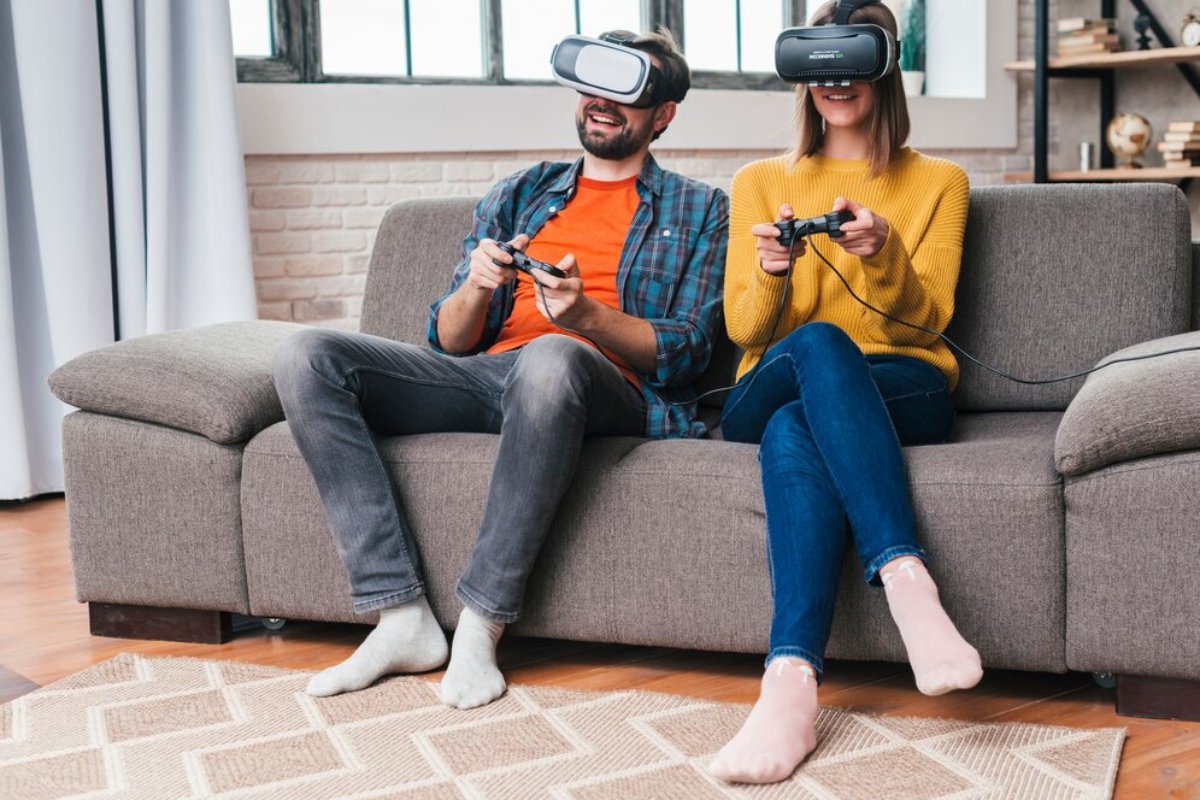The Esports Blog

Designing Multiplayer Experiences in VR Games
Virtual reality has come a long way from its early, solitary origins. Early adopters loved immersive single-player adventures. Today, VR is more social. Players want to explore, compete, collaborate—and do it all together. Developers must create exciting and strong VR multiplayer games. These games should be more than just a novelty; they need to provide lasting fun.
Creating a compelling multiplayer experience in VR isn’t just about connecting players. It’s about feeling the unique flow of being present, engaging, and sharing space online. When done right, virtual reality co-op feels like real togetherness, even if you’re far away.
In this post, we look at the design challenges and creative chances in social VR gameplay. We also discuss what makes multiplayer in VR unforgettable.
Why Multiplayer in VR Feels So Different
VR is different from traditional gaming. Players no longer just use flat screens and standard controllers. Instead, VR adds real depth, both in experience and immersion. Multiplayer VR mixes spatial presence, body language, and voice chat. This creates a feeling of real-world interaction.
Here’s what sets it apart:
- Embodied avatars that mimic head and hand movement
- Spatial audio that changes based on position and distance
- 360-degree environments where players can move naturally
- Non-verbal communication through gestures, gaze, and proximity
Being with others creates great opportunities for social design. But it also comes with risks if not handled well.
Core Pillars of Successful Social VR Gameplay
When developing a multiplayer VR experience, several core design elements become non-negotiable. These pillars influence everything from comfort to cooperation.

Presence and Identity
Players feel more connected to others when they are immersed in their virtual reality selves. Simple avatars can express strong emotions. Good motion tracking and smooth animations help enhance this effect.
Key design choices include:
- Customisable avatars that reflect personality
- Consistent body language via tracking (especially hands and head)
- Expressions or emotes for platforms lacking full facial tracking
- Clear identity indicators (usernames, friend markers) for easy recognition
Comfort and Accessibility
VR comfort can make or break engagement—especially in fast-paced multiplayer environments. Developers must accommodate different play styles, hardware, and experience levels.
Important considerations:
- Smooth locomotion options alongside teleportation
- Scaled UI for standing and seated play
- Clear onboarding or tutorials that don’t rely on prior VR knowledge
- Cross-platform functionality for a larger, more inclusive player base
A good VR multiplayer game should welcome newcomers and offer depth for veterans.
Meaningful Collaboration and Competition
Whether co-op or competitive, players need a reason to play together. Shared goals, matching skills, and team spirit make solo play fun and interactive.
In virtual reality co-op, effective collaboration might include:
- Puzzle-solving that requires physical cooperation
- Asymmetric roles (e.g. one player sees clues, the other manipulates objects)
- Shared toolkits or inventories for coordination
- Time-based challenges that encourage natural communication
For competitive games:
- Fair and balanced mechanics across hardware types
- Emphasis on presence—not just stats or scores
- Intuitive indicators of who’s winning, where danger is, and how to improve
Voice, Gesture, and Social Cues
Natural communication is at the heart of social VR gameplay. Voice chat is key. It mixes verbal and non-verbal cues, which boosts immersion.
Design-enhancing features include:
- Proximity-based voice (gets louder/softer with distance)
- Mute zones or privacy bubbles in crowded areas
- Gestural systems or simplified sign language options
- Emote wheels or avatar gestures to supplement the voice
These layers help players feel more human and connected, even in stylized or fantastical worlds.
Creative Directions in VR Multiplayer Games
Multiplayer VR doesn’t have to follow traditional formulas. Innovative studios are trying new genres and mechanics. They are expanding what can happen in shared virtual spaces.
Here are some creative directions gaining traction:
Co-Op Storytelling
Games like The Walking Dead: Saints & Sinners – Chapter 2 and Demeo allow players to explore story-filled worlds together. Through shared storytelling, players experience not just gameplay, but emotion, tension, and triumph.
Design tip: Make co-op storytelling flexible. This way, players can set their own pace. They can explore freely and keep up the excitement.
Shared Creative Spaces
Apps like Rec Room, VRChat, and Horizon Worlds let players create and decorate. They also allow friends to play together. These sandbox-style platforms prioritise user-generated content and social expression.
Players become co-creators, not just participants—unlocking hours of organic engagement.

Intimate Group Games
Small, voice-driven games like Among Us VR and A Township Tale stand out. They use presence and deception to create drama, humour, and surprise.
Smaller player counts in VR can feel more intense. Everyone feels close and reacts quickly.
Physical Activity and Teamwork
Many VR multiplayer games, from rhythm games to arena battles, leverage full-body movement. Games like Echo Arena and Eleven Table Tennis offer exciting, fast-paced fun. They challenge your timing and coordination.
Designing for physical movement boosts immersion. However, fatigue, safety, and space limits need to be considered.
Social Etiquette and Safety in Shared VR
Social interaction in VR can be delightful—or uncomfortable. Developers must create spaces where players feel safe and in control.
Best practices include:
- Clear, accessible mute/block/report tools
- Customisable personal space bubbles
- Visible moderation or community guidelines
- Prompt warnings for inappropriate behaviour
Player comfort leads to longer sessions, more engagement, and a healthier community overall.
The Role of Persistence and Progression
Many VR multiplayer games do well because they let players feel connected over time. Progression brings players back. It offers cosmetic rewards, level unlocks, and social status.
Possible mechanics:
- Leveling systems tied to co-op tasks
- Earnable customisation for avatars or home spaces
- Achievements that encourage replay and exploration
- Shared hubs or lobbies to foster community
Progress doesn’t have to be a race. Sharing milestones can feel just as good.
Balancing Technology and Experience
The technology behind VR is still evolving. Designing compelling VR multiplayer games requires balancing ambition with current limitations.
Important considerations:
- Server stability and latency minimisation
- Scalable environments that don’t compromise presence
- Optimisation for varied headsets and specs
- Efficient matchmaking or room-creation tools
A game’s beauty and creativity mean little without smooth performance and easy networking.
Final Thoughts: The Power of Presence
In VR, multiplayer isn’t just another feature—it’s an emotional amplifier. Being seen, heard, and responded to in a virtual reality builds real connections. Flat-screen games often can’t match this experience. Social VR gameplay makes virtual interactions feel real. Solving a puzzle together or laughing at a mistake creates lasting memories.
Designing for these moments needs empathy and skill. You also must understand how people interact. But when it works? It feels like magic.
As VR continues to evolve, so will the ways we connect, play, and create together.









